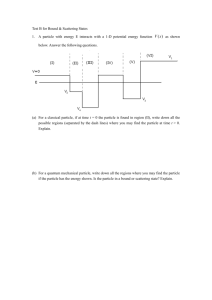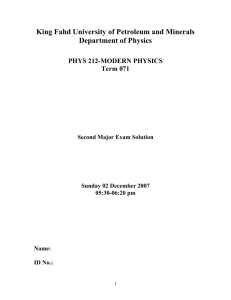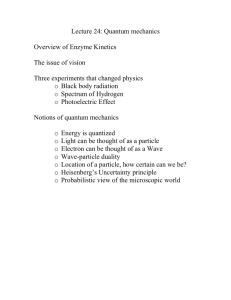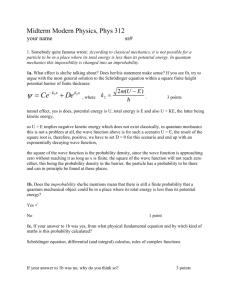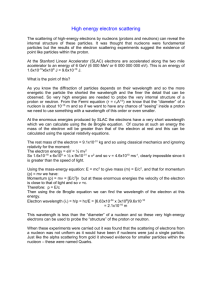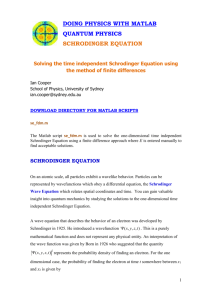Pretest: Drawing Bound and Scattering State Wave
advertisement
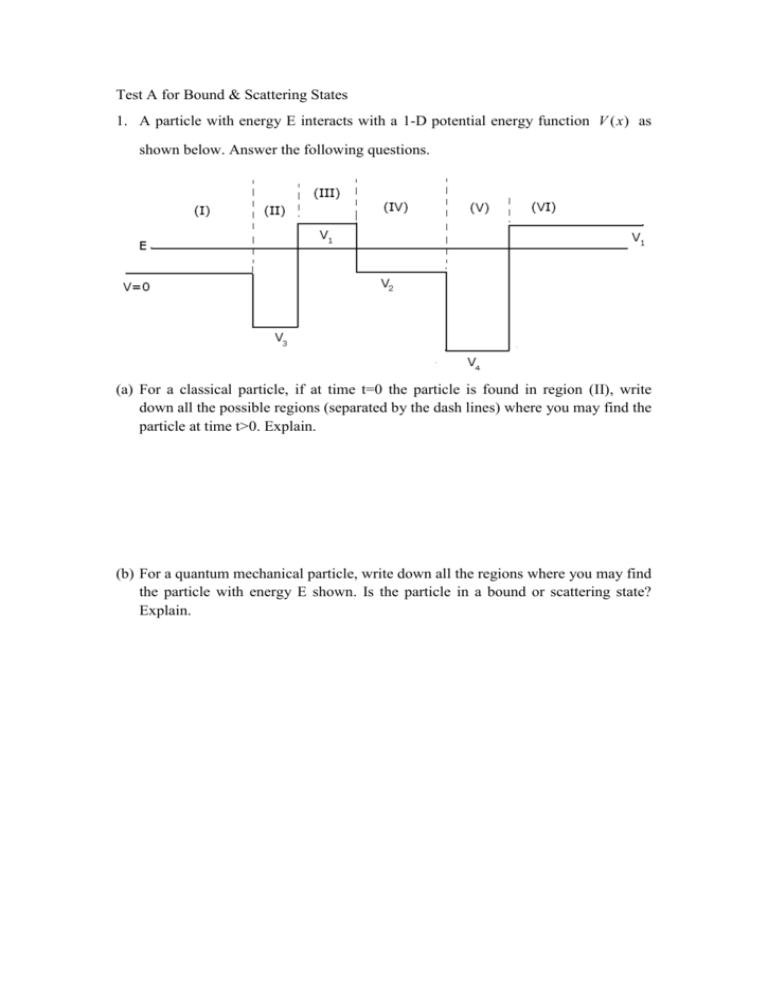
Test A for Bound & Scattering States 1. A particle with energy E interacts with a 1-D potential energy function V (x ) as shown below. Answer the following questions. (a) For a classical particle, if at time t=0 the particle is found in region (II), write down all the possible regions (separated by the dash lines) where you may find the particle at time t>0. Explain. (b) For a quantum mechanical particle, write down all the regions where you may find the particle with energy E shown. Is the particle in a bound or scattering state? Explain. 2. An electron interacts with a finite square well illustrated below. The electron has an energy Eb if it is in a bound state, and it has an energy Es if it is in a scattering state. Draw examples of possible energies Eb and Es on the figure below if it is possible to draw them. Provide your reasoning. If it is not possible to have either bound or scattering states, explain why not. 3. Choose all of the following statements that are correct about an electron with energy E interacting with a finite square well, as shown schematically in the figure below. The electron is launched from the left. (I) The electron has a non-zero probability of bouncing back by the potential energy well. (II) The electron has a non-zero probability of passing through the potential energy well. (III) It is possible that the electron is trapped by the potential energy well and the wavefunction at x is zero. A. (I) only B. (II) only C. (I) and (II) D. (I) and (III) E. All of the above 4. As shown below, a particle with energy E V0 is interacting with a potential energy barrier. Choose all of the following statements that are correct. (1) The particle is in a scattering state. (2) The particle is in a bound state. (3) The particle is in a bound state between 0 x a and in a scattering state elsewhere. A. 1 only B. 2 only information C. 3 only D. none of the above E. not enough 5. A particle with energy E is interacting with a piecewise continuous potential energy V (x ) as shown. As can be seen from the Figure, ( E V ( x)) 0 for the region x a . Choose all of the following functions that correctly represent the wavefunction in the region x a for a particle launched from the left. ( k 0 for all the options and A , B and C are constants). Ignore the normalization issues of wavefunction. (1) Aeikx A. 1 only only (2) B sin( kx) C cos( kx) B. 2 only C. 3 only (3) Aekx D. 1 and 2 only E. 2 and 3 6. Student A says that the scattering state wavefunction for an electron in a finite square well can never be symmetric about the center of the well because the electron has to be launched from either left or right. Student B says that the scattering state wavefunction in a finite square well can be symmetric about the center of the well because the electron need not be launched from left or right. Explain why you agree or disagree with each student. Qualitatively sketch a wavefunction to support your answer. Please draw only the real part of the wave function in all the questions. 7. Sketch one possible stationary state wave function for an electron in the following finite square well with energy E. Explain your drawing. Explicitly comment on the wavelength in the different regions. 8. Sketch one possible stationary state wave function for an electron interacting with the following finite piecewise continuous barrier with energy E. Explain your drawing. Explicitly comment on the wavelength in the different regions. 9. Suppose the electron is incident from x . Sketch one possible stationary state wave function for the electron interacting with the following finite square well with energy E. Explain your drawing. Explicitly comment on the wavelength in the different regions. 10. Sketch one possible wave function for an electron with energy E interacting with the triangular potential energy well V (x ) as shown ( V ( x 0) E as shown). The potential energy is infinite in the region x>a. Explain your drawing. Explicitly comment on the wavelength in the different regions.

